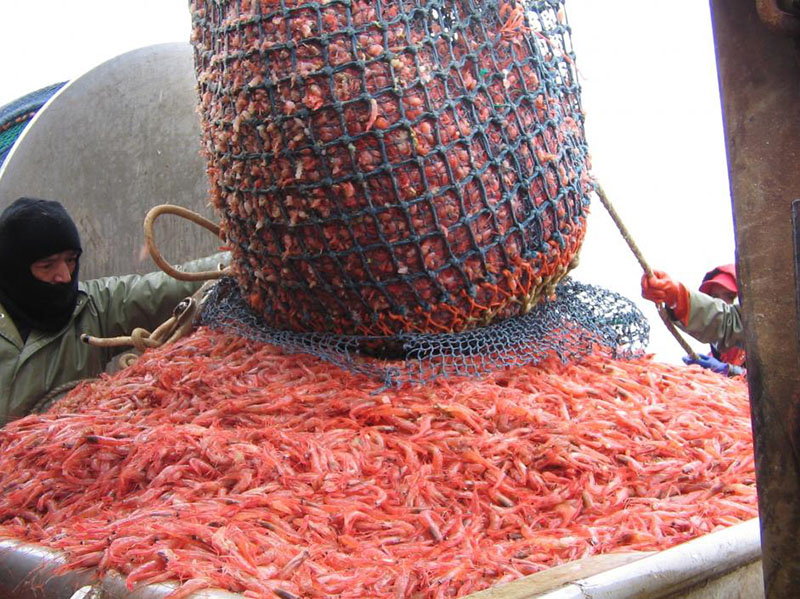In its August meeting, the Atlantic States Marine Fisheries Commission decided on alterations to the northern shrimp fishery management plan to improve management practices ahead of the fishery’s reopening.
The fishery has been under moratorium since 2014 after catches dropped from more than 12 million pounds in 2010 to just 563,313 pounds in 2013. While this summer’s stock survey data isn’t set to be released until November, it’s safe to say figures haven’t changed drastically enough to warrant a reopening anytime soon.
“From what I’ve heard, the numbers are up a bit, but we have to remember that these numbers are ticking up from the bottom, from historically low levels,” said Max Appelman, a fishery management plan coordinator with the commission. “It seems like there’s a spawning stock out there and taking away fishing pressure is definitely helping. Will the fishery ever return to where it was in the ’80s and ’90s? It’s hard to tell.”
In the updated plan, the allocation is divided between New England states (80 percent of TAC is allocated to Maine and 10 percent each to New Hampshire and Massachusetts) with adaptive options that would allow states to modify allocation between gear types on an annual basis.
The commission’s shrimp section would also be able to rollover unused quota from one state to another.
The new plan would also require trawlers to use either a double-Nordmore or compound grate system, both designed to minimize the catch of small, male shrimp so they are able to transition into females and can be harvested later.
When shrimp were available to buy during controlled winter sampling programs, consumers jumped at the opportunity. According to Appelman, shrimpers were getting $8 to $12 a pound, while during an open season they might get upward of $1 a pound.
The commission will decide the fate of next year’s fishery after the summer stock survey report is released in November.







